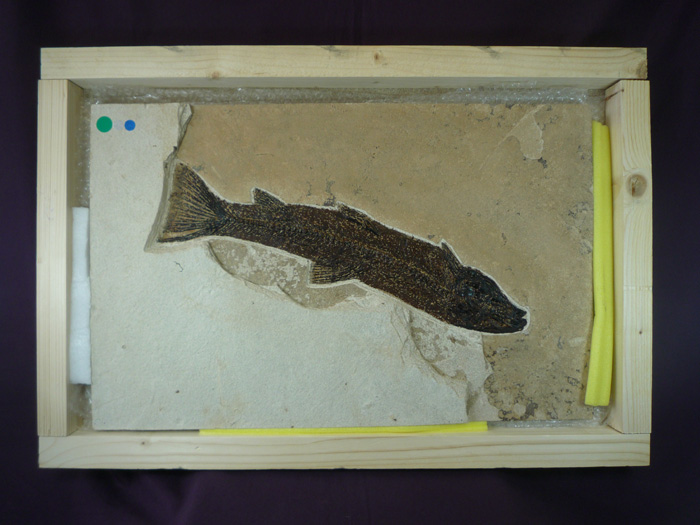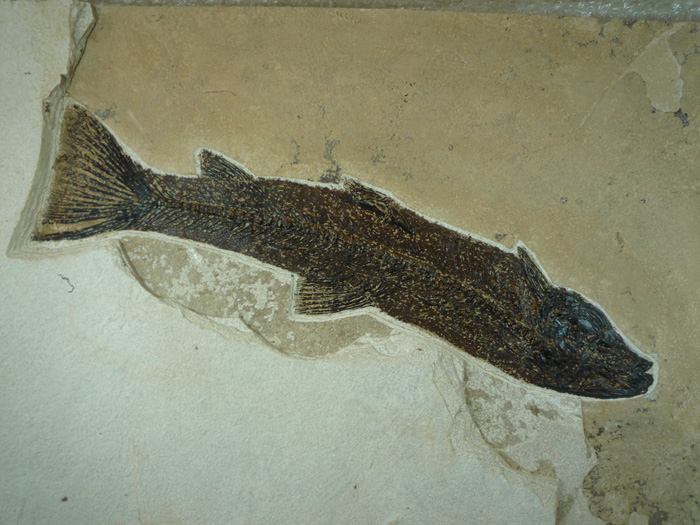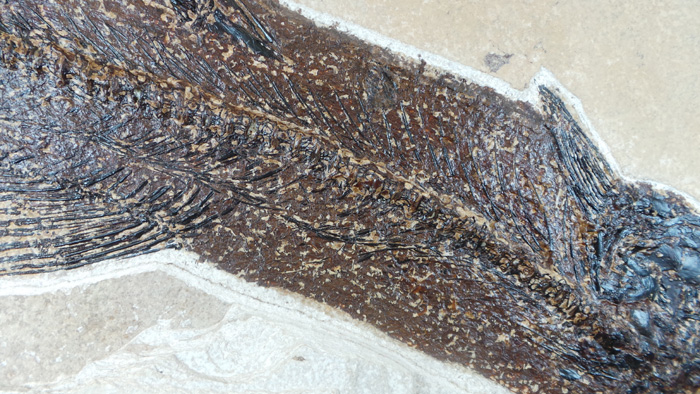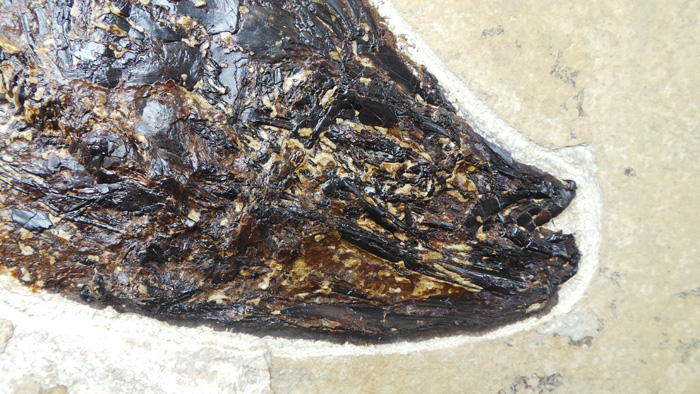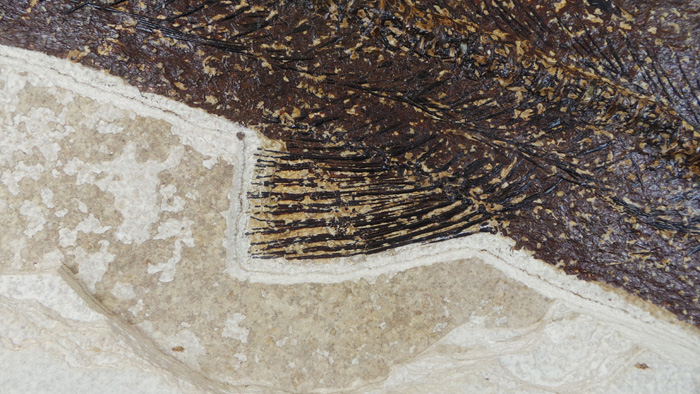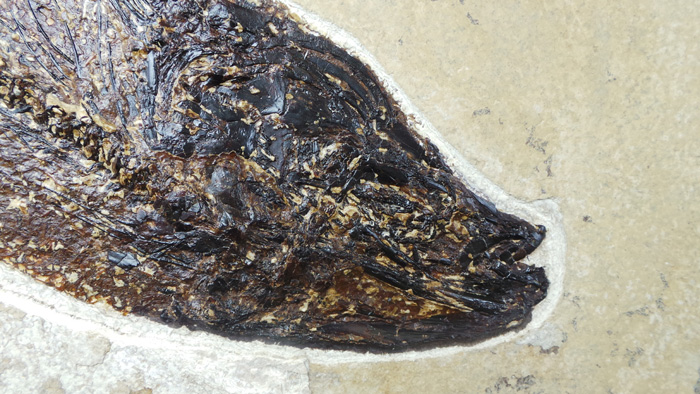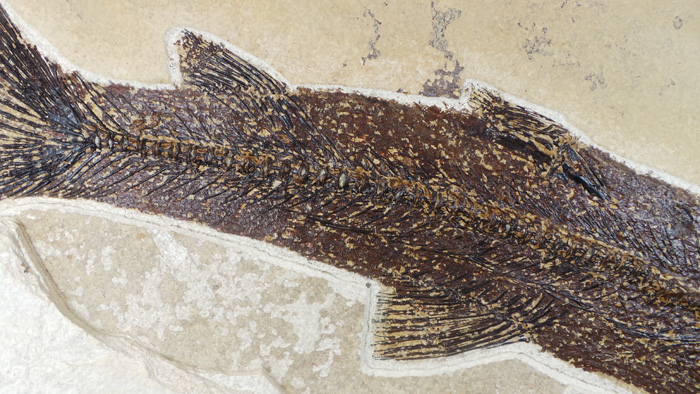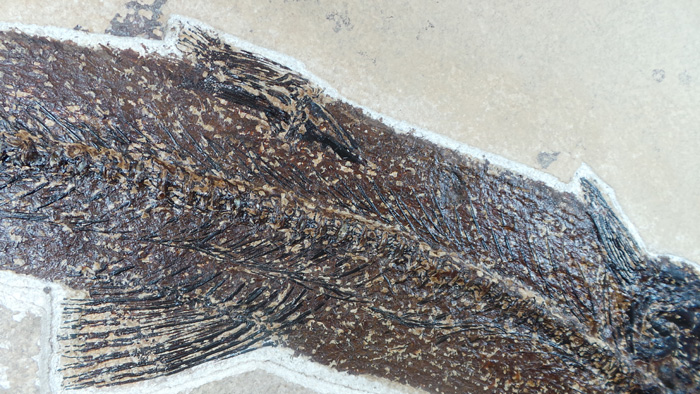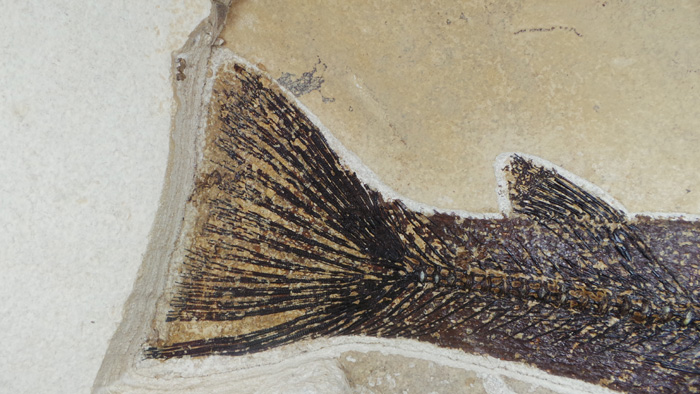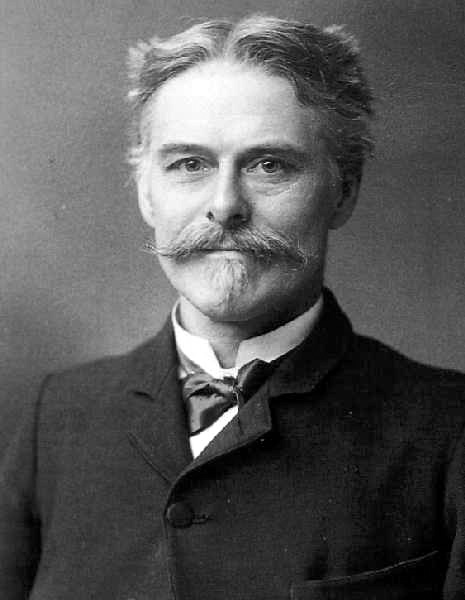MONTH'S FOSSIL - NOVEMBER 2023
Notogoneus osculus (COPE,1865) Notogoneus osculus (PERKINS,P.1970)
Reference: CC20
Genus - Specie: Notogoneus osculus (COPE,1865) Notogoneus osculus (PERKINS,P.1970)
Description: fossil fish, giant predator
Period: Paleogene
Epoch-Stage-Strata: Lower Eocene
Era: Cenozoic
Age: Ypresian (about 47-56 million years)
Common name: fossil fish , giant predator, prehistoric fossil fish
Comments: Kingdom: Animalia, Phylum: Chordata, Class: Actinopterygii, Order: Gonorynchiformes, Family: Gonorynchidae, Genus: Notogoneus. Extint. The legendary sites of the formation from Green River in Wyoming whose fossils are very valued by its variety, high quality,and conservation,as well as fish,other invertebrates and plants have been located in this excellently preserved, according to scientific training this magnificent state of conservation in the world, it is due to a combination of two factors : first a period of cold deep during the Eocene, which would have caused that lifeless fish had sunk faster since its swim bladder would have inflated less and second the great depth of the lakes and the exceptional conditions of lack of oxygen in the water, this would have prevented scavengers animals destroyed the corpses . The Green River Formation in Wyoming represents one of the largest and most important documented accumulations of sedimentary rocks in the world and dates from approximately 50 million years ago. It covers an area of more than 25,000 square miles and has an average of 6,000 meters thick. These lakes were formed by geological changes that elevated the Rocky Mountains in the early times. The climate was very different from the current desert climate, it was identical to the existing current subtropical climate of the Gulf Coast and the areas of the South Atlantic of the United States currently. Notogoneus osculus (osculus from the Latin 'mouth') was an opportunist spending most of its life in rivers that are connected and fed on flow to the inland lake only went into the Lake during certain seasons when when the bottom waters were nontoxic. As a result of this circumstance Notogoneus is uncommon and rare in the Green River formation. The usual size of this genus is around 18 inches (45.7 cm) and its maximum length is 3 feet (91 cm) small specimens are extremely rare. Notogoneus was a predatory creature and would have powered creatures at or near the bottom of its habitat, probably at night Notogoneus fed mainly on crustaceans. You could say that has certain similarities with a fish current modern suction cup. Genuine and original authentic fossil, giant fossil fish, plate prepared by professionals in the quarry of origin, mounted and reinforced on a wooden base for better exposure and protection, completely natural piece, no restoration , no repair, complete fish, out of size , measures plate-slab: 590 x 350 x 25 mm , measures fish : 450 x 95 mm (approximate measurements), weight: 8.700 grams, excellent museum quality, veryrare , collector's choice , gorgeous. One of the stellar fish most sought after by collectors for its great rarity its elongated appearance as an eel and shortage of the varied fauna of Green River.. Difficult. Museum quality. It is delivered and shipped with authenticity certificate. Black and White photo By Frederick Gutekunst : Cope, Edward Drinker (1840-1897) Paleontologist and zoologist, author who classified the genus and species.
Location: (Ulrich quarry), Kemmerer (southwestern Wyoming) USA
Price: 1.900 E
